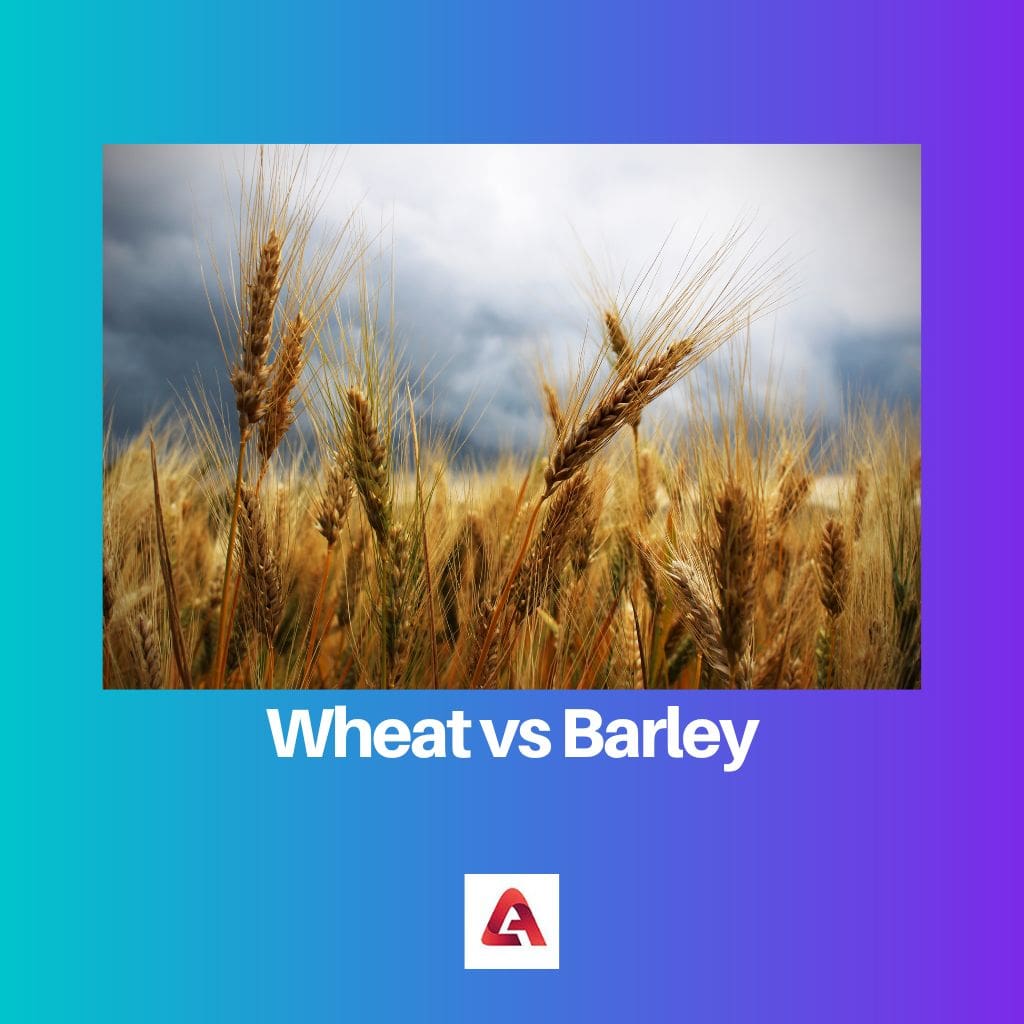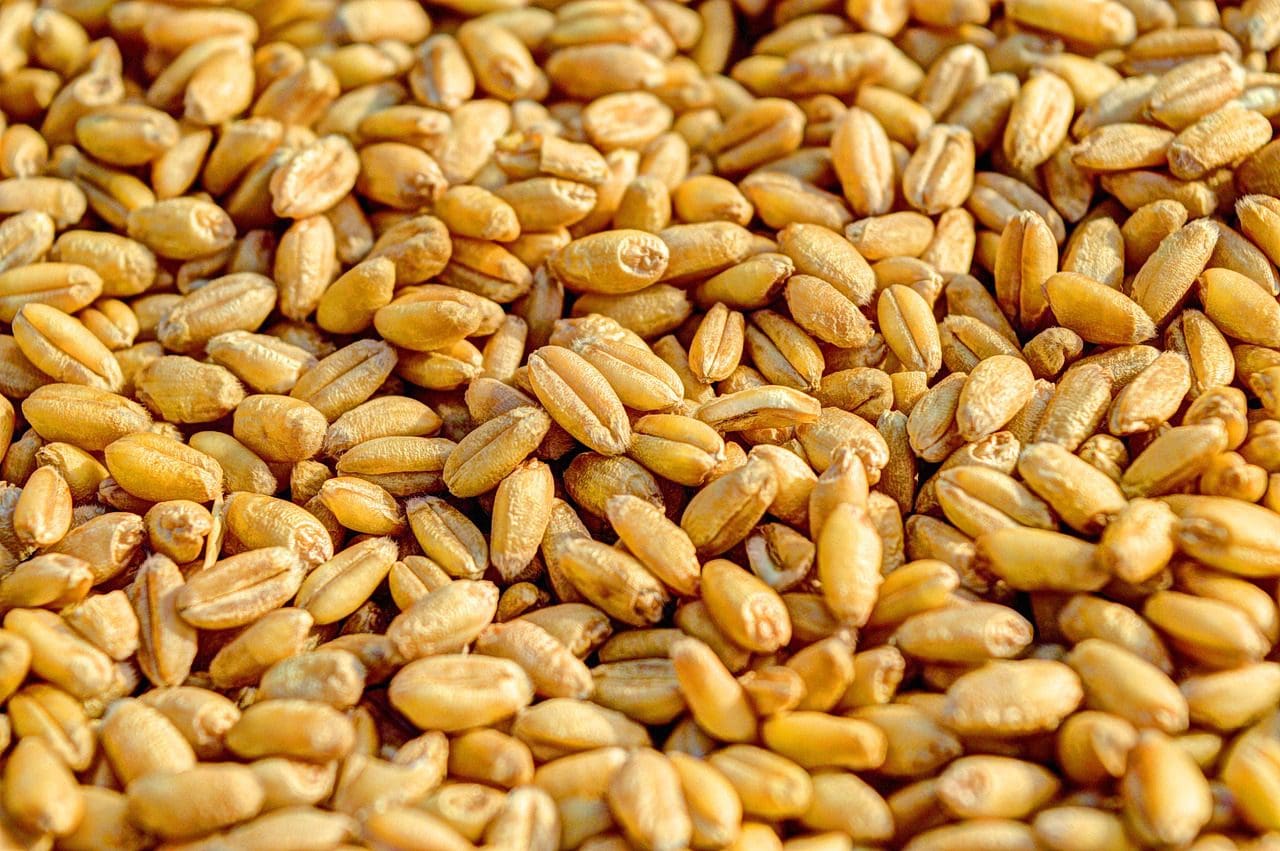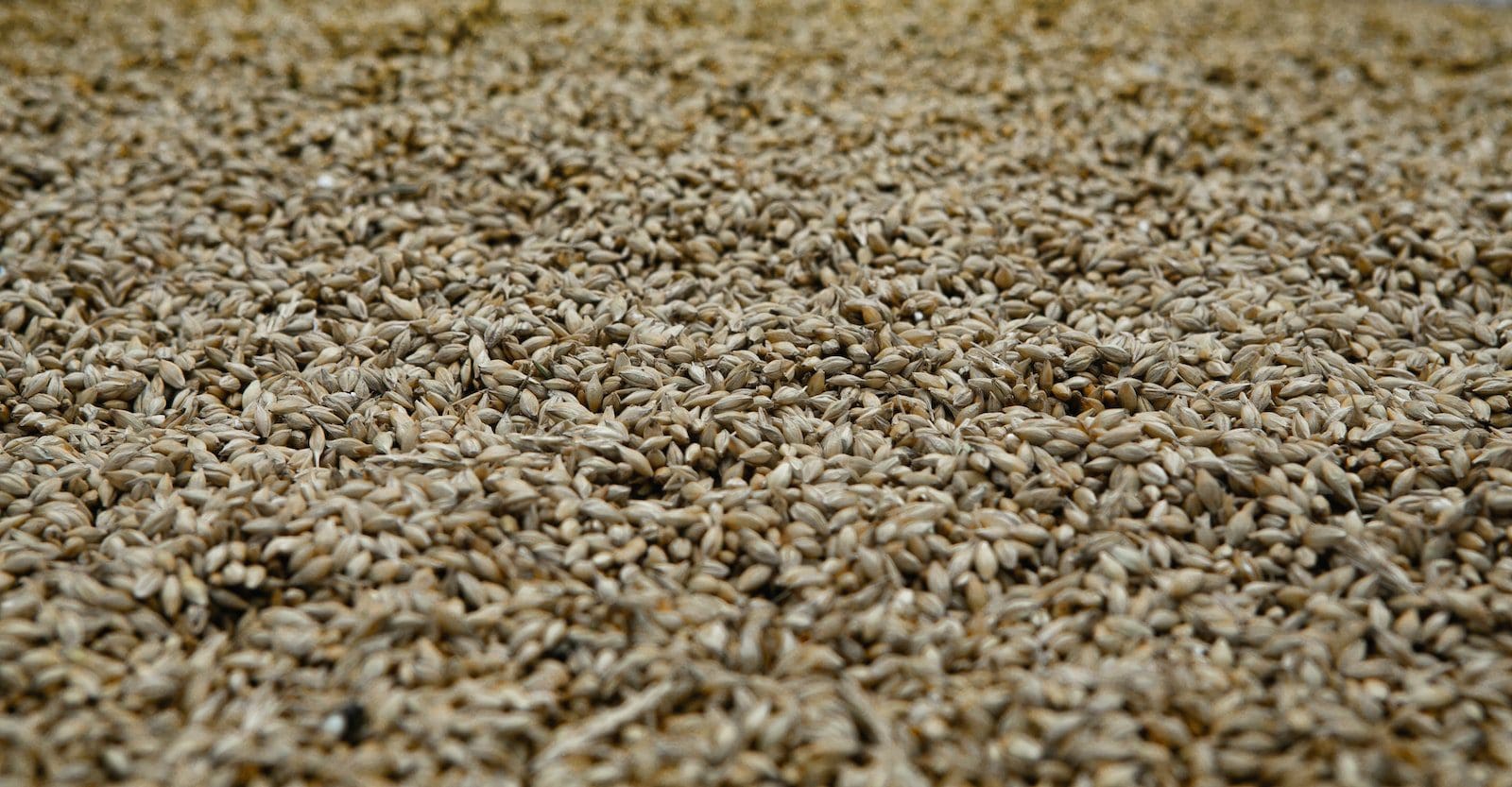Wheat and barley are confused with each other. Why is that so? Both originated 10,000 years ago in the Middle East and are among the first plants to be cultivated for consumption.
They are also used in processing drinks and nutritional dishes, which become a necessary substance for intake in daily life. They are also an integral part of animal feeding.
The two are loaded with the needed nutrients for completing one’s daily diet, but it is also noted that not all can consume them. Both being the gluten type of protein, the individuals who are gluten intolerant would not be able to consume them.
Key Takeaways
- Wheat is a cereal grain used primarily for making bread, pasta, and other baked goods due to its high gluten content.
- Barley is another cereal grain commonly used in animal feed, brewing, and as a whole grain in soups and salads.
- While both grains are nutritious and versatile, they differ in gluten content, culinary applications, and texture.
Wheat vs Barley
Wheat is a staple food and is used to make a variety of food products, as well as livestock feed, biofuels, and industrial products. There are many different varieties of wheat, each with its own unique characteristics. Barley is widely cultivated and used for food and beverage production, grown in cooler climates.

Wheat processing includes milling and grounding that removes the first two fibre-rich layers of wheat. This whole wheat flour lacks fibre content. While barley only undergoes hulling and, in rare cases pearling that stores the grain’s fibre.
Comparison Table
| Parameters of Comparison | Wheat | Barley |
|---|---|---|
| Characteristics | Golden-brown during harvest | Yellow-white hue during harvest |
| Processing | The main processing includes milling, which removes the first two layers, leaving only the inner germ grounded to flour. | Hulling that removes only the first layers and, in rare cases, pearling(removing the first two layers) |
| Usage | Used to produce a range of bakery products from biscuits to cakes | Mainly used for animal feeding and also malted for alcoholic drinks like beer |
| Nutritional values | Most fibre is lost during milling but is still rich in nutrients like folate, manganese, and phosphorus. | Rich in antioxidants, vitamins and minerals |
| Health problems | Wheat allergy is a commonly observed health problem caused due to intolerance to wheat. | No such allergies are recorded for the consumption of barley. |
What is Wheat?
Wheat is a cereal of the grasses family Poaceae, the scientific name being Triticum.
It is one of the largest cultivated grains in the world and has six varieties: complex red, winter, hard shelling, mild red winter, hard white soft white wheat and durum wheat.
They are thrived in the cooler seasons and harvested during the beginning of winter.
Usually, they are milled and grounded to give wheat flour. Raw wheat flour is the grind of only the inner germ of the endosperm. This is used for bakery products.
Sometimes the hull is mixed with the flour after processing, which helps the whole wheat flour regain the lost nutrients.
It can also be cracked or pre-boiled for other products like semolina, malt etc.

What is Barley?
Barley is also a cereal grain of the family Poaceae. The scientific name is Hordeum Vulgare. It is the fourth largest cultivated grain, including a large area for cultivation.
Along with wheat, this was one of the first barley used for plantations. They are of three types: two-row, six-row and hull-less barley.
It is hulled to remove the outer skin, also called as hull, of barley. Therefore, it is rich in nutrients like manganese, magnesium, calcium and phosphorus, proteins, fibres and vitamins.
Sometimes it can also undergo the process of pearling.
The cereal is rich in fibre, which is also why it is included in weight-loss diets. It is also useful for decreasing cholesterol levels and is therefore recommended by doctors to the ones suffering from type 2 diabetes.

Main Differences Between Wheat and Barley
- The main difference lies in how the two grains are processed before they are ready for consumption. While wheat has to undergo several processes like milling, grounding etc., before it can be cooked, barley, on the other hand, does not need any of these. It can be boiled like rice and consumed directly.
- Even during harvest, wheat is known to have a golden-brown hue, while barley has a yellow-white hue. Also, wheat thrives during the cooler season and is harvested in the winter; on the other hand, barley thrives through warm seasons and is harvested in the summer.
- Although mostly cereal grains, wheat is used as whole wheat flour in baking biscuits, cakes, etc. It is also ground and used as Seminole. But barley is malted to be used in alcoholic drinks; they are the major ingredient in drinks like whiskey and beer. Barley is also used for animal feeding.
- Due to the difference in processing, the nutritional values provided by the two grains are also vastly different. Wheat, after undergoing milling, loses all its fibre but is rich with the mineral nutrients like phosphorus, folate etc. Since only the hard outer is removed in hulling, all the fibre-rich nutrients are conserved in the cereal barley.
- A few are allergic to the nutrients in wheat, which is known as wheat allergy. But this characteristic is not seen in those who consume barley.

- https://apsjournals.apsnet.org/doi/abs/10.1094/PDIS.1997.81.12.1340
- https://academic.oup.com/nar/article-abstract/7/7/1869/2381007

The main differences between wheat and barley were explained thoroughly and helped me understand their unique characteristics better. Great article!
I agree, the information provided was concise and clear.
Yes, the article did a fantastic job of highlighting the distinctions between the two grains.
I loved how the article discussed the nutritional values of wheat and barley. This information is vital for those who are health-conscious.
Absolutely, knowing the nutritional content of the foods we consume is so important. This article shed a lot of light on that aspect.
I believe this article is an excellent resource for anyone looking to learn about wheat and barley and the differentiation between the two. Great work!
Agreed, a very informative piece of writing.
Indeed, I would recommend this to anyone interested in broadening their knowledge on the topic.
This article is incredibly detailed. The valuable information it provides is much appreciated, a great read for anyone who wants to learn more about the subject.
Totally agree with you, Clarke. So much useful information in one place.
This article is very informative, it’s great to see the differences and similarities between wheat and barley explained in such detail!
I agree, I learned a lot from reading this!
The author’s explanation about the processing of wheat and barley grains was very clear and interesting. I now have a much better understanding of the topic.
Yes, I feel the same way. I didn’t understand the differences in processing until I read this article.
A really educational article, I appreciate the effort that went into researching and writing it.
I found the comparison table particularly helpful. It made it easy to understand the key differences between the two grains. Great work!
Absolutely, the comparison table was a fantastic addition to the article.
This article has made it very clear why wheat and barley are confused with each other, and I appreciate the effort put into explaining the differences.
I found it really enlightening to learn about the origins and uses of these grains.
Absolutely, I learned a lot about wheat and barley from reading this article.
I was pleasantly surprised by the level of detail in this article. The comparison between wheat and barley was clearly presented in an engaging manner.
I couldn’t agree more – an article that masterfully outlines the key differences.
The author’s breakdown of the health problems associated with wheat and barley was really enlightening. Very useful information for anyone with dietary restrictions.
I agree, it’s great that they covered this topic to raise awareness about dietary limitations some people might have.